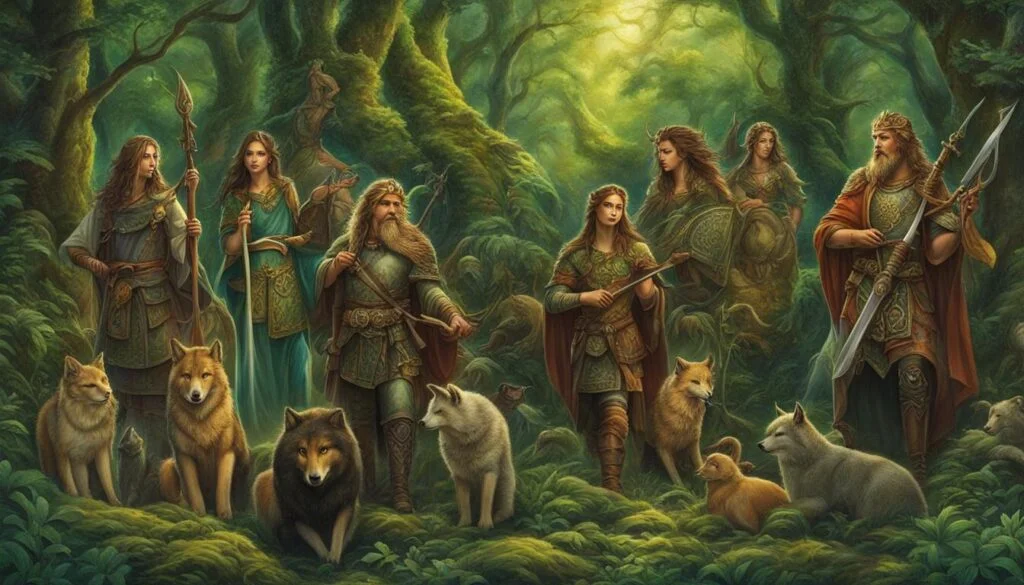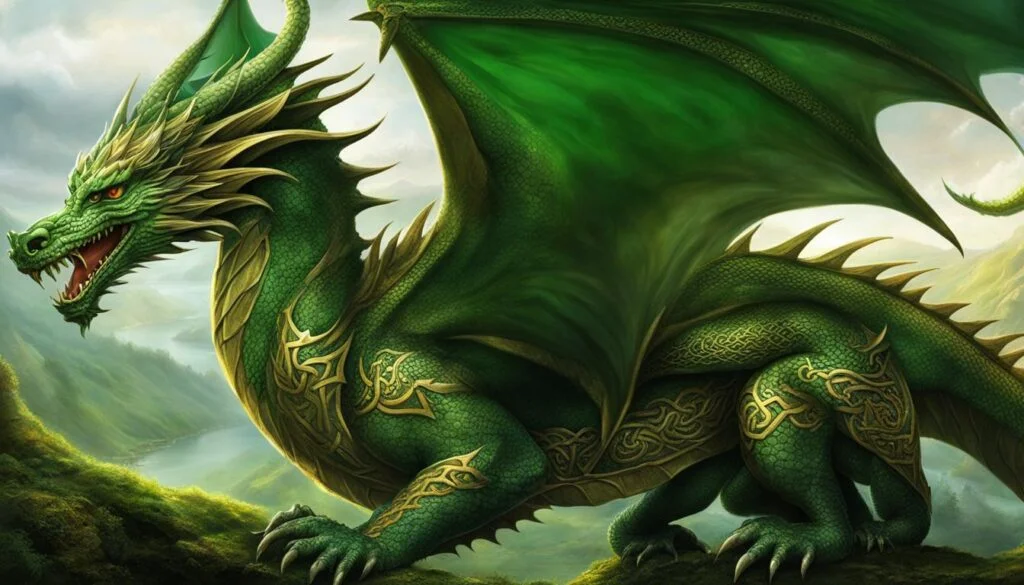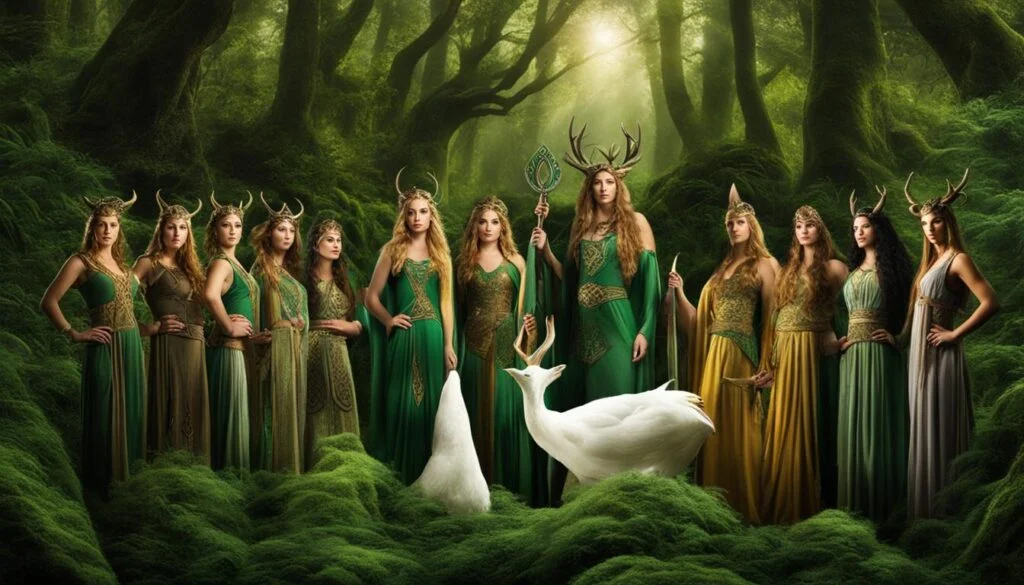Welcome to our exploration of the ancient Celtic pantheon and the intriguing realm of Celtic deities. In this article, we will delve into the question of how many Celtic gods there actually were and uncover the fascinating diversity of these mythological figures.
Though we may never have a comprehensive list of all the Celtic gods and goddesses, we have pieced together fragments of knowledge from archaeological findings and accounts by Classical authors. Join us on this journey as we uncover the rich tapestry of ancient Celtic mythology and the multitude of deities worshipped by the Celts.
Through the worship of these deities, the Celts sought to understand and connect with the various aspects of life and the natural world. From rivers to warfare, these gods and goddesses embodied it all. Let’s embark on this enchanting exploration together.
Key Takeaways:
- There were over 400 gods and goddesses in the ancient Celtic pantheon.
- The Celtic gods defied categorization and often had all-encompassing powers and attributes.
- Many Celtic deities were worshipped locally or regionally, with certain gods being more popular in specific areas.
- Female deities played important roles in Celtic mythology and were widely venerated.
- Roman influence and syncretism further shaped the understanding and worship of Celtic gods.
The Diversity of Celtic Gods
The ancient Celtic pantheon was a complex and diverse collection of gods and goddesses, each with their own unique powers and attributes. Unlike the gods of other mythologies, such as the Greek or Roman pantheon, Celtic gods were not easily categorized. They encompassed a wide range of domains and abilities, making them an intriguing and enigmatic group.
Within the Celtic pantheon, there were gods associated with various aspects of life and the natural world. For example, Abnoba and Aeracura were goddesses of hunting, while Agrona was a goddess associated with slaughter in battle. Some gods, like Alator and Albiorix, were even equated with Roman deities such as Mars, reflecting the influence of Roman culture on the Celtic pantheon.
The sheer number and variety of gods and goddesses within the Celtic pantheon is a testament to the diverse beliefs and traditions of the ancient Celts. With over 400 documented deities, the Celtic gods represented a wide range of domains, including but not limited to agriculture, craftsmanship, war, and the elements.
The image above offers a glimpse into the ancient Celtic pantheon, depicting various gods and goddesses honored by the ancient Celts. This visual representation provides insight into the diversity and significance of these deities within Celtic mythology.
The study of ancient Celtic gods and their roles within Celtic mythology offers a fascinating exploration of the ancient world and the complex cultural beliefs of the Celts. It is a window into a time when gods and goddesses played a vital role in the lives and beliefs of the people, shaping their understanding of the world and providing a framework for their spiritual practices.
Local and Regional Deities
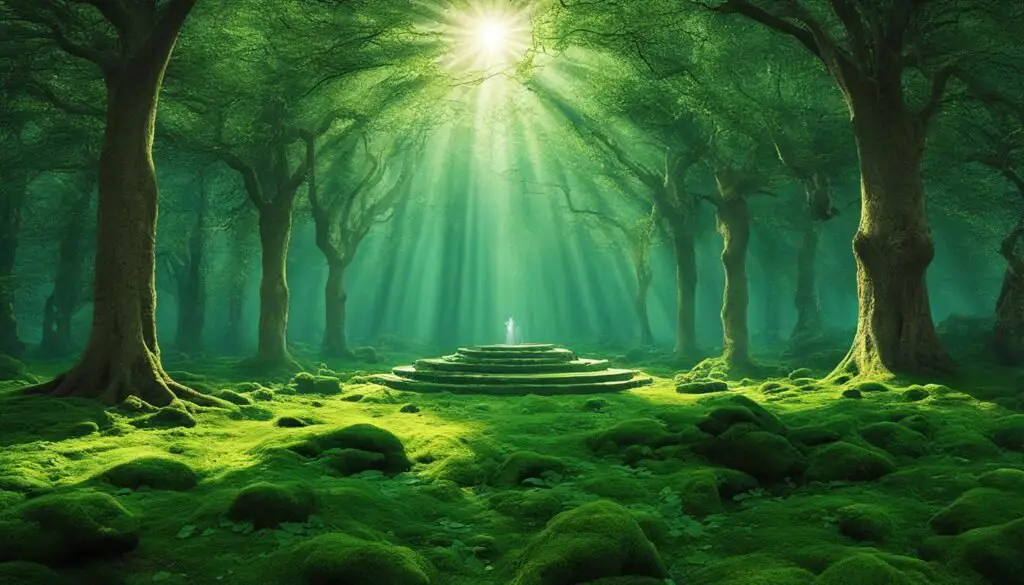
Many of the Celtic deities were worshipped locally or regionally, with certain gods having greater popularity within specific areas. These gods and goddesses were revered within specific regions, reflecting the unique cultural and religious practices of the ancient Celts.
One example of a locally venerated deity is Lenus, a god associated with healing. Lenus was highly revered by the Treveri tribe in northeast England and in Aventicum (Avenches), Switzerland. The worship of Lenus in these regions highlights the importance placed on healing and well-being within their communities.
Another notable deity is Belatucadrus, who was worshipped primarily in northern England. Belatucadrus was associated with war and protection, and numerous inscriptions dedicated to this god have been uncovered in northern England, emphasizing the significance of this deity in that specific region.
The Celtic pantheon was incredibly diverse, with gods and goddesses holding various roles and attributes. Each deity had specific associations and qualities that made them revered in particular regions.
Overall, the Celtic gods and goddesses formed a rich tapestry of religious beliefs and practices across different regions. The worship of these deities brought communities together, offering spiritual guidance and protection. Understanding the local and regional aspects of Celtic deity worship enhances our appreciation for the cultural and mythological diversity of the ancient Celts.
The Role of Female Deities
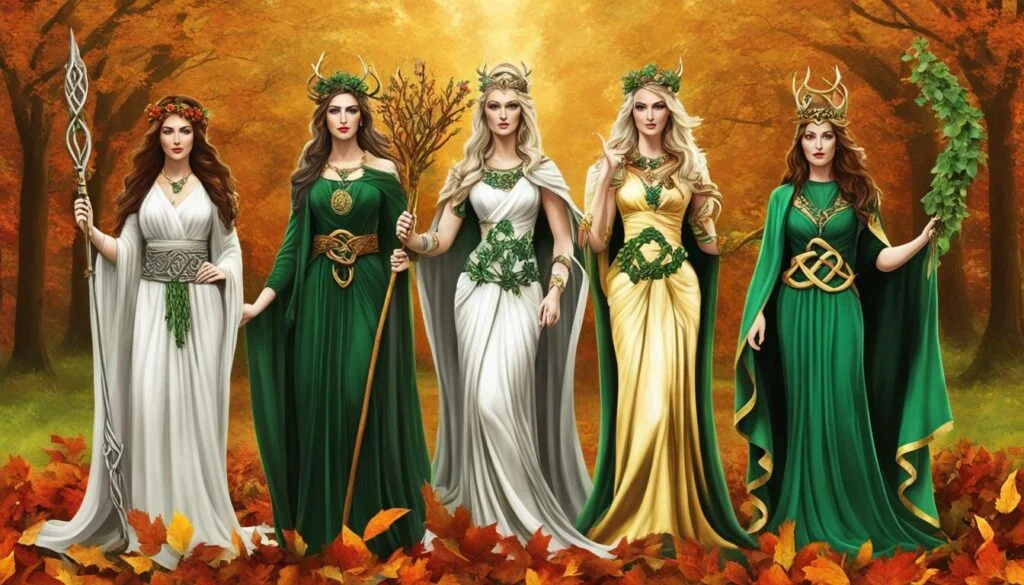
The Celtic pantheon boasts a significant number of powerful female deities, playing essential roles in Celtic mythology and religious practices. These goddesses encompassed a wide range of domains and were revered throughout Celtic territories.
One notable example is Brigid, the goddess associated with healing, poetry, and smithcraft. Brigid was highly revered for her ability to bring forth growth and renewal, symbolizing the arrival of spring. Another prominent goddess is Belisama, known as the goddess of lakes and rivers. She represented the life-giving force of water and was often associated with healing and protection.
Celtic goddesses often had names derived from the Celtic word for “bear.” For instance, Artio, a Celtic goddess associated with abundance and fertility, and Andrasta, a warrior goddess linked to victory in battle.
The veneration of female Celtic deities highlights the important roles that women held in Celtic society, with goddesses embodying various aspects of life and the natural world. Whether it was the healing arts, creativity, or protection, these goddesses played a vital role in the religious and cultural fabric of the ancient Celts.
The Influence of Roman Era
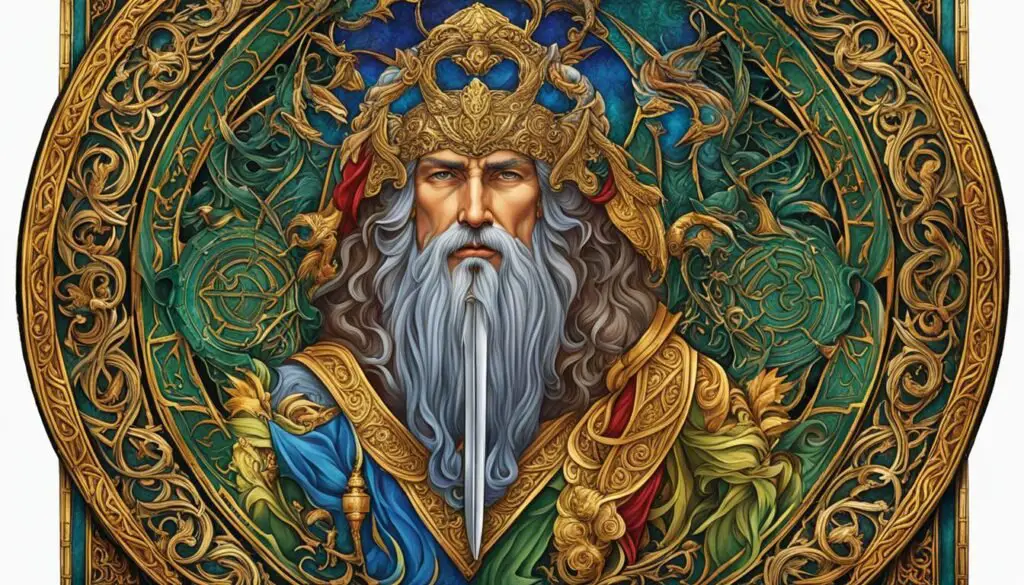
With the Roman conquest of Celtic areas, the worship of Celtic gods became associated with their Roman counterparts through a process of syncretism. Roman-era inscriptions often name Celtic gods alongside their Roman equivalents, as seen with Celtic votive inscriptions from the Roman period. This association is known as the interpretatio romana. Roman influence greatly impacted the worship and understanding of Celtic deities, and many Celtic gods came to be equated with Roman gods such as Apollo and Mercury.
During the Roman era, the cultural exchange between the Romans and the Celts resulted in the blending of their respective religious beliefs and practices. The Roman pantheon, with its well-established gods and rituals, had a significant influence on the Celtic religious landscape. The syncretism of Celtic and Roman deities led to a hybridization of beliefs, where Celtic gods were often merged with or associated with their Roman counterparts.
The interpretatio romana, the practice of identifying gods from one culture with those from another, allowed for a smoother integration of the two pantheons. For example, the Celtic god Lugus was often identified with the Roman god Mercury due to their shared attributes of communication, commerce, and travel. Similarly, the Celtic goddess Epona, associated with horses and fertility, was equated with the Roman goddess Diana.
Roman-era Celtic deities were worshipped in temples and sanctuaries dedicated to both Celtic and Roman gods. These places of worship served as meeting points for Celtic and Roman religious traditions, where worshippers could venerate their respective gods and participate in rituals that incorporated elements from both cultures.
The influence of the Roman era on Celtic religious practices and beliefs is evident in the visual representations of Celtic deities found in art and archaeological artifacts. Many depictions combine Celtic iconography with Roman artistic styles, reflecting the merging of the two cultures. These artworks provide valuable insights into how the Romans interpreted and represented Celtic gods, showcasing a blending of religious symbols and motifs.
The influence of the Roman era on Celtic gods extended beyond the realms of worship and art. Roman literary sources, such as the writings of Julius Caesar and Lucan, mention Celtic deities and provide glimpses into their roles and characteristics. While these accounts must be treated with careful consideration, as they were written from a Roman perspective, they offer valuable information about the beliefs and practices surrounding Celtic gods during the Roman era.
The Enigmatic Lugh
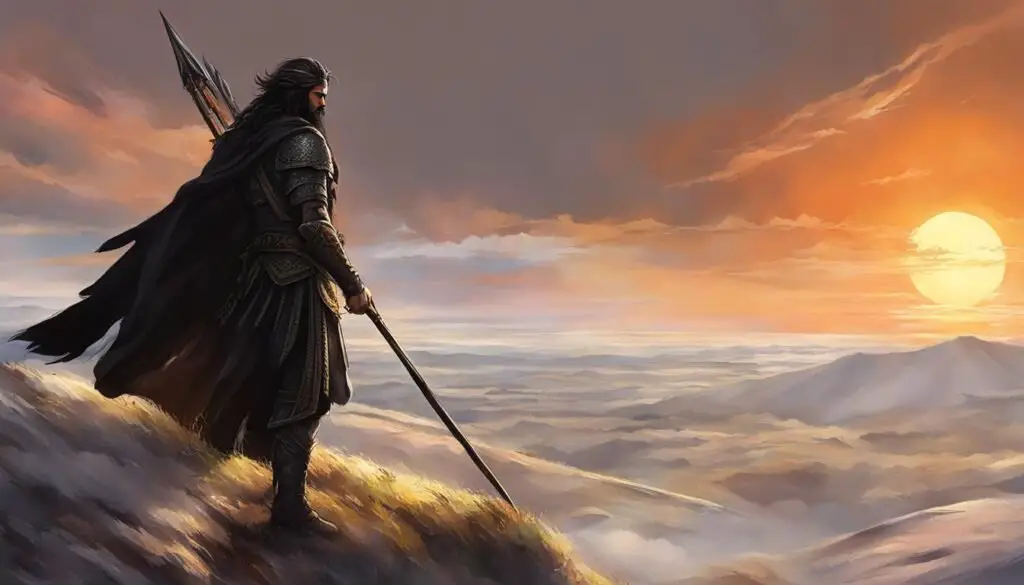
Lugh, the Celtic god, holds a place of prominence and celebration within Celtic mythology. He is widely recognized as a pan-Celtic deity, revered in various Celtic regions across Europe. Associated with arts, crafts, and warfare, Lugh embodies a diverse range of domains. The attributes and role of Lugh tend to differ in different Celtic myths and traditions, but he consistently emerges as a powerful and highly skilled deity. His multifaceted nature sheds light on the complexity of Celtic gods and their significance in ancient Celtic culture.
Lugh’s tale in Celtic mythology is one filled with intrigue and mystery. His name remains etched in history, immortalizing his importance among the pantheon of Celtic deities.
Celtic Deities in Irish and Welsh Literature

Irish and Welsh literature offer valuable insights into the mythology surrounding Celtic deities. Although these texts were written well after the Christianization of Celtic lands, they still provide glimpses into the ancient beliefs and traditions. It is important, however, to interpret these literary works with caution, keeping in mind the influence of Christianity on the portrayal of Celtic gods.
Many characters and figures found in Irish and Welsh literature can be linked to ancient Celtic deities, suggesting a degree of continuity in the conceptualization of these supernatural beings and forces. These ancient texts often present gods and goddesses as powerful and influential entities, wielding significant authority over various aspects of life and the natural world.
While there are recognizable connections between certain characters in Irish and Welsh literature and the ancient Celtic pantheon, the wide range of Celtic theonyms and the diversity of beliefs across different Celtic regions make it challenging to establish a universal pantheon. Celtic mythology is rich and complex, reflecting the unique cultural and religious traditions of each Celtic territory.
Notable Examples of Celtic Deities in Literature:
- The character Lugh, associated with light, crafts, and war, appears as a prominent figure in both Irish and Welsh mythology.
- The Welsh deity, Branwen, is depicted as a powerful and tragic figure in the Mabinogi, one of the most important collections of Welsh mythological tales.
- The Irish goddess Brigid is celebrated as a patroness of poetry, healing, and the hearth, with her influence stretching beyond literature into Irish folk traditions.
While the existence of these deities in literature showcases their enduring impact in Celtic cultures, further exploration and analysis are necessary to fully comprehend their roles and significance within the wider context of Celtic mythology.
Symbolism and Representation in Celtic Art
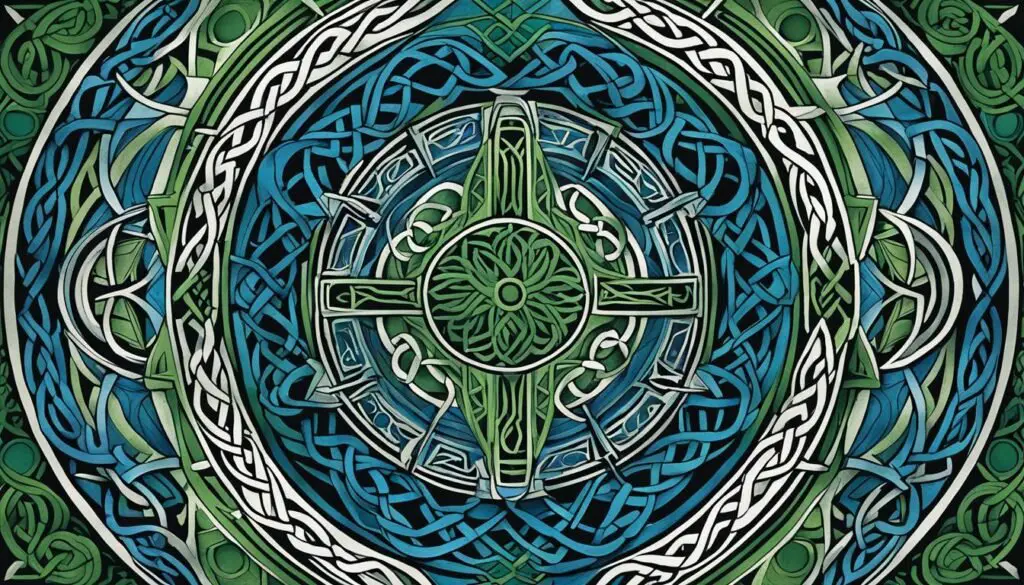
Celtic art holds a treasure trove of symbolism and serves as a window into the representation of Celtic gods. Particularly prevalent during the La Tène period, Celtic art showcases intricate designs that convey deep meaning and spiritual significance.
La Tène artwork often features stylized human faces and animal bodies, intertwining the sacred powers, humanity, and the natural world. The intricate patterns and elaborate motifs found in Celtic art symbolize the interconnectedness of life, emphasizing the spiritual harmony between humans and the natural environment.
Celtic artisans incorporated animal symbolism into their artwork, reinforcing the belief that power could be attained through the embodiment of these creatures. For example, depictions of ravens and boars on weaponry conveyed the notion of harnessing the strength and wisdom associated with these animals.
Another fascinating aspect of Celtic art is the representation of human-animal hybrids and mirrored serpentine figures. These enigmatic designs emphasize the mystical and transcendental nature of Celtic religious beliefs.
The inclusion of symbolic elements in Celtic art not only serves as an expression of artistic creativity but also conveys profound spiritual and cultural messages. Through their intricate designs, ancient Celtic craftsmen immortalized the mythology and gods of their culture, bridging the gap between the mortal and divine realms.
Conclusion
The exploration of Celtic gods reveals a vast and rich pantheon worshipped by the ancient Celts. With over 400 gods and goddesses, Celtic mythology encompasses a wide range of supernatural beings. From local and regional deities to pan-Celtic figures like Lugh, the diversity within the Celtic pantheon is remarkable.
Roman influence played a significant role in shaping the understanding and worship of Celtic gods. The syncretism of Celtic and Roman deities resulted in the association and equating of certain Celtic gods with their Roman counterparts.
While our knowledge of Celtic mythology comes from various sources and must be approached with caution, the enigmatic nature of Celtic art provides additional insights into the beliefs and representations of Celtic deities. Symbolism found in Celtic artwork, such as stylized human faces and animal motifs, reflects the interconnectedness of the sacred, humanity, and the natural world.
Studying Celtic gods not only offers fascinating insights into ancient religious practices but also highlights the cultural diversity of the Celtic people. The richness and complexity of the Celtic pantheon continue to captivate scholars and enthusiasts alike, inviting further exploration and appreciation.
FAQ
How many Celtic gods are there?
The ancient Celtic pantheon consisted of over 400 gods and goddesses.
What is the diversity of Celtic gods?
The Celtic pantheon included gods associated with hunting, warfare, healing, and more. They had all-encompassing powers and attributes, making it difficult to categorize them like Greek or Roman gods.
Who are the local and regional Celtic deities?
Many Celtic deities were worshipped locally or regionally, with certain gods having greater popularity within specific areas. Examples include Lenus, associated with healing, and Belatucadrus, associated with war.
What is the role of female deities in Celtic mythology?
The Celtic pantheon included a significant number of female deities. These goddesses were associated with various aspects of life, such as healing, poetry, and rivers.
How did the Roman era influence Celtic deities?
With the Roman conquest of Celtic areas, Celtic gods became associated with their Roman counterparts through syncretism. Roman influence greatly impacted the worship and understanding of Celtic deities, with many Celtic gods being equated with Roman gods.
Who is Lugh and what is his significance?
Lugh is one of the most well-known and celebrated Celtic deities. He is often considered a pan-Celtic deity associated with various domains, including arts, crafts, and warfare.
What insights do Irish and Welsh literature provide about Celtic deities?
Irish and Welsh literature provide additional insights into Celtic deities, although these texts were produced well after Christianization and should be interpreted with caution. Many of these works feature characters and figures that can be linked to ancient Celtic deities.
What is the symbolism and representation of Celtic gods in art?
Celtic art, particularly from the La Tène period, provides valuable insights into the symbolism and representation of Celtic gods. Animal symbolism and stylized human-animal hybrids reflect the interconnectedness of sacred powers, humanity, and the natural world.
What are the main takeaways about Celtic gods?
The exploration of Celtic gods reveals the vast and diverse pantheon worshipped by the ancient Celts. Roman influence, literature, and art all provide insights into these deities. However, our knowledge of Celtic mythology is limited, given the lack of written records produced by the Celts themselves.


